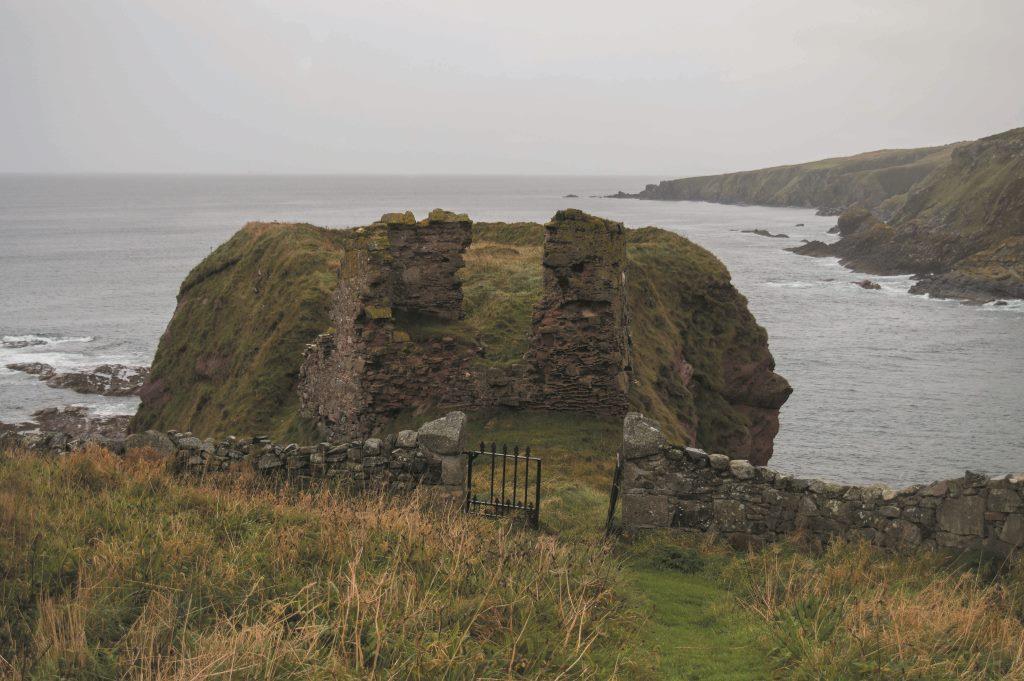Dundarg Castle

Dundarg Castle Details
Dundarg Castle, ruins of C13 castle of Comyns on fortified promontory site occupied by Beaumont C14 and destroyed after siege
- Closest To: Pennan,New Aberdour,Gardenstown, Macduff,Rosehearthy,New Pitsligo
- Access: S.O.A.C. Public Access
- Grid Reference: NJ895649
Dundarg Castle is a ruined promontory castle which sits behind the private gardens of a 19th century house by the same name. The ruin consists largely of the shattered remains of the gatehouse, which block access to the promontory, although there are substantial earthworks remaining from the outer courtyard, and grass-covered footings on the promontory itself which also survive.
The site was used as a fort in the Iron Age, and by the Picts, but fell out of use before the powerful Comyn family founded a castle here after they became Earls of Buchan in about 1214. The Comyn castle consisted of the D-shaped outer ward, defended by a ditch and bank, and a stone wall with a twin-towered gatehouse. A second gatehouse blocked access to the narrow ridge leading to the promontory, and an inner gatehouse, which was a simple rectangular tower. A range of buildings occupied the western side of the promontory. It is likely that the castle developed in stages, ending perhaps in the 1260s.
During 1308, when teh Bruces were destroying the Comyns as a political force, Edward Bruce attacked Dundarg, and the castle was probably made indefensible at that time, but in the 1330s the castle was refortified by Henry de Beaumont, claiming the title Earl of Buchan. He was one of the principal supporters of Edward Balliol against the child-king David II. Balliol had an argument over an inheritance with Beaumont, who retreated to Dundarg in a huff. This caused Balliol’s regime to collapse, and the Regent Andrew Moray besieged Dundarg in 1334. He took the castle using artillery (the earliest mention of this in Scotland) and captured Beaumont, who returned to England when he was ransomed. When Beaumont’s son-in-law the Earl of Atholl was killed at Culblaen a year later, Balliol’s claims were doomed. The castle was destroyed a second time, never to be used again apart from a possible brief refortification for artillery in the 1550s.
Become a supporter of my work to access a more detailed history